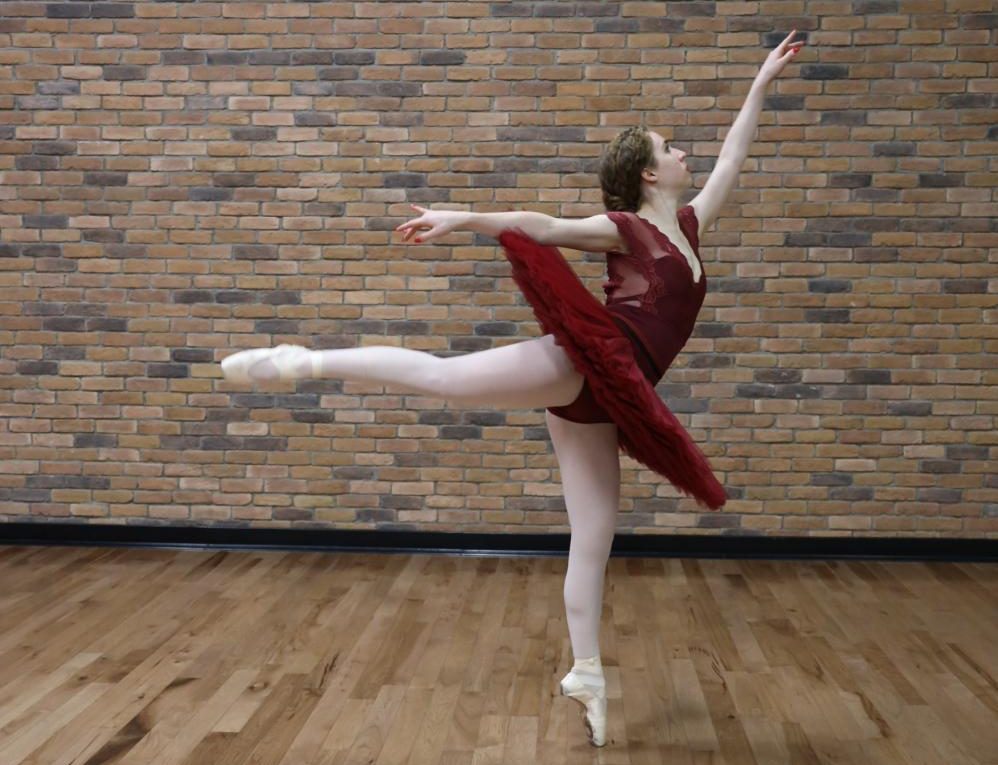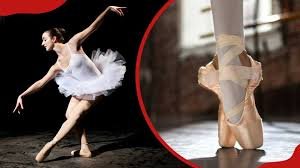Is ballet a sport? The answer is not simple.
Ballet combines art and athleticism, challenging both the body and mind. Ballet demands rigorous physical training. Dancers undergo intense practice to perfect their moves. They need strength, flexibility, and endurance, much like athletes. The discipline and dedication required are immense.
Ballet also involves a high level of skill, precision, and technique. This raises the question: does ballet meet the criteria of a sport? Many people see ballet as an art form, emphasizing its beauty and expression. Yet, the physical demands and competitive nature suggest otherwise. In this blog post, we will explore the arguments for and against ballet being considered a sport. Let’s dive into this fascinating debate.
Ballet’s Historical Roots
Ballet is both an art form and a physical discipline. Its roots go back centuries. Understanding its origins helps us appreciate its complexity and beauty.
Origins Of Ballet
Ballet began in the Italian Renaissance courts during the 15th century. It was initially a form of entertainment for the aristocracy. Dancers performed intricate movements in elaborate costumes. The term “ballet” comes from the Italian word “ballare,” meaning “to dance.” Ballet’s early days were characterized by courtly dances and pageantry. It was not yet the athletic spectacle we know today.
Evolution Over Centuries
Ballet evolved significantly over the centuries. In the 17th century, King Louis XIV of France established the first professional ballet company. He also founded the Académie Royale de Danse. This institution formalized ballet techniques and training.
By the 19th century, ballet had spread across Europe. Romantic ballets, like “Giselle,” became popular. These performances featured dramatic storytelling and expressive choreography. The late 19th and early 20th centuries saw the rise of Russian ballet. Companies like the Ballets Russes pushed the boundaries of the art form.
Today, ballet is a global phenomenon. It is performed and enjoyed by people worldwide. Ballet’s long history is a testament to its enduring appeal and artistic significance.

Credit: www.ideastream.org
Physical Demands Of Ballet
Ballet is often seen as a beautiful art form. Yet, it is also physically demanding. Ballet dancers need strength, endurance, and rigorous training. This section explores the physical demands of ballet.
Rigorous Training
Ballet dancers train for many hours each day. They start young, often around age five. Training includes many aspects like technique, flexibility, and stamina. Dancers practice movements repeatedly to perfect them. This dedication is crucial for excellence.
Ballet classes include barre and center work. Barre exercises focus on technique and muscle strength. Center work involves jumps, turns, and combinations. It tests balance and coordination. Ballet training is intense and continuous.
Strength And Endurance
Ballet demands great physical strength. Dancers must lift their own body weight gracefully. Male dancers often lift their partners too. This requires core and arm strength.
Endurance is also key in ballet. Performances can last for hours. Dancers need stamina to keep up energy levels. They often cross-train with running or swimming. This helps build cardiovascular strength.
Flexibility is another important aspect. Dancers stretch daily to maintain and improve flexibility. This helps prevent injuries and improves performance.
Comparing Ballet And Traditional Sports
Ballet and traditional sports both demand high levels of physical ability. While they seem different, there are many similarities between them. Let’s explore the skill sets and competitive nature of both.
Skill Sets
Ballet dancers and athletes in traditional sports need to be very skilled. Both require strength, endurance, and coordination. Ballet dancers must have flexibility and precision. They perform complex movements with grace. Traditional athletes also need precision, but in a different way. They might focus on hitting a ball or running fast.
Here is a comparison of skill sets:
| Skill | Ballet | Traditional Sports |
|---|---|---|
| Strength | High | High |
| Endurance | High | High |
| Flexibility | Very High | Moderate |
| Precision | Very High | High |
Competitive Nature
Both ballet and traditional sports have a competitive side. Ballet dancers compete in performances and auditions. They strive to be the best and get leading roles. This is similar to athletes in sports who compete in games and tournaments.
There are also competitions specifically for ballet, such as:
- International Ballet Competitions
- National Ballet Competitions
- Local Dance Competitions
Traditional sports have well-known competitions too. Examples include:
- Olympics
- World Championships
- Local Leagues
Both ballet and traditional sports require participants to train hard. They must practice regularly to improve their skills and compete successfully.

Credit: www.ballerinagallery.com
Athleticism In Ballet
Ballet is often seen as an art form, but it is also a display of incredible athleticism. Dancers train for years to perfect their technique and performance. The physical demands are similar to those in sports. Ballet requires strength, flexibility, and endurance. These qualities are crucial for a dancer to execute complex moves with grace and precision.
Flexibility And Agility
Ballet dancers must have exceptional flexibility. Their training includes extensive stretching exercises. This allows them to achieve high leg lifts and deep backbends. Flexibility is not just about stretching. It also involves strengthening muscles to support the joints.
Agility is another key component. Dancers must quickly change direction and maintain balance. This requires a strong core and excellent coordination. Ballet moves, such as pirouettes and jumps, demand quick reflexes and precise timing.
Injury Risks
Despite the beauty of ballet, dancers face significant injury risks. Common injuries include sprained ankles, tendonitis, and stress fractures. These injuries often result from repetitive movements and intense training schedules.
Preventing injuries is critical. Dancers need to follow strict conditioning routines. This includes strength training, proper warm-ups, and cool-downs. Wearing the right footwear and practicing good technique also help reduce risks.
Here is a quick summary of common injuries and their prevention:
| Injury | Cause | Prevention |
|---|---|---|
| Sprained Ankles | Improper landing | Strengthening exercises, proper technique |
| Tendonitis | Overuse | Rest, ice, proper warm-up |
| Stress Fractures | Repetitive strain | Rest, good nutrition |
Artistry And Expression
Ballet is an exquisite blend of artistry and expression. It is a unique form of dance that tells stories and conveys emotions through every movement. This section explores how ballet dancers use their bodies to create art, moving beyond the confines of sport.
Storytelling Through Movement
Ballet dancers are storytellers. They use their bodies to create narratives. Each movement carries meaning. Every gesture adds to the story. Through graceful steps and dramatic poses, dancers bring characters to life. They transport the audience to different worlds.
In classical ballets, like The Nutcracker or Swan Lake, the dancers portray well-known tales. They communicate the plot without words. Instead, they rely on their physicality to express the storyline. This form of storytelling is unique and powerful.
Emotional Impact
Ballet also creates a strong emotional impact. The dancers’ expressions and movements convey deep emotions. Happiness, sadness, love, and anger come alive on stage. The audience can feel these emotions.
Dancers use their facial expressions, posture, and gestures to convey feelings. A simple tilt of the head or a pointed toe can speak volumes. This emotional connection is what makes ballet so compelling.
| Aspect | Explanation |
|---|---|
| Storytelling | Using movement to tell a story without words. |
| Emotional Expression | Conveying emotions through body language. |
Through artistry and expression, ballet transcends the boundaries of sport. It becomes a living, breathing work of art.
Ballet Competitions And Recognition
Is ballet a sport? This question often sparks debates. One way to understand ballet’s athleticism is through its competitions and recognition. Ballet competitions require intense physical and mental preparation. They showcase a dancer’s dedication, skill, and artistry. Winning these competitions brings honor and recognition to the dancers and their schools.
Prestigious Competitions
There are many prestigious ballet competitions worldwide. One of the most famous is the Youth America Grand Prix. Young dancers from all over the globe compete in this event. They aim to win scholarships and opportunities to join top ballet schools and companies.
Another renowned competition is the Prix de Lausanne. Held in Switzerland, it attracts young ballet talents. It provides them with the chance to train with world-class professionals. The USA International Ballet Competition is also notable. It is held every four years in Jackson, Mississippi. This competition is often called the “Olympics of Ballet.”
Awards And Honors
Winning a ballet competition often comes with many awards and honors. Dancers can receive scholarships to prestigious ballet schools. They may also earn contracts with leading ballet companies. These awards help dancers further their careers and gain recognition in the ballet world.
Receiving medals and trophies is another form of recognition. Gold, silver, and bronze medals celebrate the dancers’ hard work. These honors highlight their exceptional talent and dedication. Ballet competitions are not just about winning. They are about the journey, growth, and recognition that comes with each performance.
Public Perception
Public perception of ballet often places it in a unique category. Some see it as an art form, others as a sport. This divergence affects how ballet dancers are viewed and respected.
Cultural Views
In many cultures, ballet holds a significant place. It symbolizes grace, discipline, and elegance. For centuries, it has been a part of cultural traditions in countries like Russia and France. Ballet schools in these regions are highly esteemed. Students undergo rigorous training, similar to athletes in other sports.
In contrast, some cultures view ballet more as a form of entertainment. They appreciate the beauty and storytelling but may not recognize the physical demands. This disparity in cultural views impacts public perception. It influences whether ballet is seen primarily as art or sport.
Media Representation
Media plays a crucial role in shaping public opinion about ballet. Movies, TV shows, and social media can portray ballet in various lights. Films like “Black Swan” highlight the intense physical and mental demands on dancers. These representations can change how people view ballet.
Televised ballet performances often focus on the artistic elements. They emphasize the beauty and choreography. This can lead to a perception of ballet as more art than sport. Yet, documentaries and behind-the-scenes footage reveal the athleticism involved. They showcase the strength, endurance, and training required.
The media’s portrayal can significantly influence whether ballet is seen as a demanding sport or a beautiful art form. Balanced representation is essential for accurate public perception.

Credit: valenciavoice.com
Frequently Asked Questions
Is Ballet Considered A Sport?
Yes, ballet is considered a sport. It requires physical strength, flexibility, and endurance. Ballet dancers train rigorously like athletes.
Does Ballet Require Physical Fitness?
Absolutely, ballet demands high physical fitness. Dancers need strength, flexibility, and stamina. Consistent training is essential to maintain performance levels.
How Is Ballet Training Similar To Sports?
Ballet training involves rigorous physical exercises. It focuses on strength, flexibility, and coordination, similar to sports training.
Can Ballet Improve Athletic Performance?
Yes, ballet can enhance athletic performance. It improves balance, flexibility, and coordination, which are beneficial for various sports.
Conclusion
Ballet requires strength, grace, and dedication. It blends art with athleticism. The dancers train hard, just like athletes. They push their bodies to the limit. Ballet performances display intense physical skills. To answer the question, ballet is indeed a sport.
It demands discipline, endurance, and passion. So, whether on the stage or in the studio, ballet showcases true athletic prowess.



